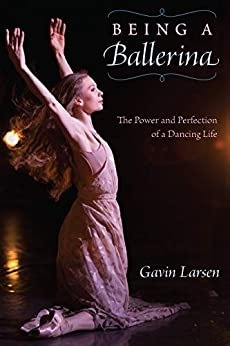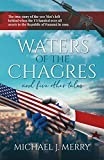Discovering Connecticut's Cinematic Gems with Illeana Douglas in "Connecticut in the Movies."
Bookpleasures.com is honored to have as our guest,Illeana Douglas, a multifaceted talent whose remarkable career spans both the silver screen and television.
With starring roles in acclaimed films such as Cape Fear, To Die For, and Ghost World, as well as memorable appearances in TV hits like Goliath, Shrill, and Entourage, Illeana has left an indelible mark on the entertainment landscape.
Besides her achievements on-screen, she brings a rich inheritance as the granddaughter of the legendary Melvyn Douglas, a two-time Academy Award recipient.
Illeana's deep understanding and appreciation for vintage movies have landed her roles as a presenter and participant in multiple film documentaries, including her own executive-produced production, Pioneers: First Women Filmmakers.
Her literary prowess shines as well, evident in her acclaimed debut book, I Blame Dennis Hopper: And Other Stories from a Life Lived In and Out of the Movies, hailed as the Best Pop Culture book of 2015 by Entertainment Weekly.
Connecticut in the Movies has just been published by Lyons Press a division of Globe Pequot Press in Essex, Ct.
Norm: Welcome, Illeana, and I appreciate your willingness to take part in our interview.
Illeana: Thank you. This project has been a labor of love and I appreciate your interest.
Norm: What inspired you to shift your focus from forgotten films to the Connecticut movie brand for your new book?
Illeana: I was always fascinated by the idea of Connecticut cinema. As I mentioned in the book, my ears would perk up whenever I saw a film that was placed in Connecticut, or the characters were, "from Connecticut".
Even if the film was made in Hollywood, the use of Connecticut felt like a character. It was used to connote something about the person and conjured up an image usually of some idyllic country locale—like Christmas in Connecticut, or Mr. Blandings Builds His Dream House, or a dark suburban culture like
The Ice Storm, Gentleman's Agreement, The Man in the Grey Flannel Suit, and of course The Swimmer which I used for the cover image because the film is one of the cornerstones of the book—from Dream Houses to Dark Suburbia.
As I began my research I realized Connecticut had also been the location for many genres of films. I wanted to explore the changing perception of Connecticut on screen. It's not all Stepford Wives, it's how we got to Stepford Wives.
Norm: What were some challenges you faced when researching and writing about the Connecticut movie scene, considering it might not be as well-documented as other film histories?
Illeana: The challenges were to tell a story of Connecticut through films. I find this fascinating. I hope you do to.
I want the reader to know more about the film, from popular to obscure, but I am weaving the story and behind the scenes of the making of the film, with a little bit about the location—the town where it was filmed--and the history of that section of Connecticut.
The film Parrish is a great example because the film is about the Tobacco industry in Windsor but along with the making of the film I weave in the chapter about the history of native Americans first harvesting tobacco, how it became a leading agriculture in Connecticut, how Martin Luther King came to Simsbury to work in a Tobacco field, and how Connecticut was a footnote in history to his amazing life, and the fight to preserve the buildings and farms he worked at.
At the same time I am telling the story of Troy Donahue and Claudette Colbert—two actors from different generations were working on the film in the early 60's as the studio system was collapsing!
My hope is that this enhances the film experience. I want to be clear, It's not the ultimate guide to Ct. movies. The book is a journey, a road trip through the state. It's also highlighting how Connecticut influenced Hollywood films.
Little known facts like how Hollywood designers created a mythical Connecticut. It's their interpretation of Connecticut I find interesting.
Norm: How does your personal perspective as a Connecticut native contribute to the unique viewpoint of this book?
Illeana: I am not a native. I was born in Massachusetts , I grew up in Connecticut, but I spent a good deal of time in New York.
I moved to New York to go to acting school, lived there for many years, then I moved to Los Angeles. So I guess you could say I am a commuter.
I was always interested in Connecticut, and as an inside joke in many of my films like Cape Fear I would slip in that my character was, "from Connecticut."
I started writing the book during Covid, while living in La. I fell in love with my subject! I was writing about how wonderful Connecticut was, and Arthur Miller living on his farm and writing, and thinking about Bette Davis living in Westport, and at night I started looking at Zillow, thinking hmmmm, maybe I should move to the country.
Get an old farmhouse and fix it up. So I did. I wrote half the book in Los Angeles yearning for Connecticut, and the second half of the book I wrote while my house was under construction.
So I was writing about Blandings and now I was Mrs. Blandings. I am and always will be a tourist. This was an opportunity to take a road trip through the state I grew up in. I tried to capture my fascination with the culture, all the many cultures and cities of Connecticut.
Norm: Can you provide a few examples of well-known films that were set or filmed in Connecticut but may not be widely recognized for their connection to the state?
Illeana: I am returning to Parrish directed by the great Delmer Daves. The film stars Troy Donahue Claudette Colbert, Karl Malden and Connie Stevens.
It's based on a book by Mildred Savage—a fascinating writer who was a Connecticut native. The film is a splashy melodrama, but you will learn about the once booming tobacco industry of Connecticut.
Daves also adapted the script while living in Old Lyme. It's a travelogue of Connecticut. The photography is stunning, and many Ct. landmarks are featured.
Strangers on a Train was shot in Danbury. It's one of my favorite Hitchcock films. One of the locations is now a train museum. Hitchcock used Danbury as a backdrop, and it looks terrific.
It Happened to Jane features Chester. Mr. Blandings Builds His Dream House was filmed in Hollywood, but it was based on a real story by writer Eric Hodgin's who lived in Milford.
The producer of the film also lived in Milford, he was a neighbor, and so he snapped up the rights! Milford was the inspiration.
It was one of my favorite, and most moving experiences, to visit Eric Hodgin's original Blanding's house. I stood outside and just cried. Here was a place that inspired a film my grandfather starred in. Amazing!
Norm: Can you tell us about some of the most fascinating behind-the-scenes stories that you share in your book about Connecticut movies?
Illeana: I am biased. They are all fascinating! Mystic Pizza came about because the writer, Amy Holden Jones, was on her way to Maine and stopped in Mystic, Ct. to get fried clams, saw the Mystic Pizza sign, and got the idea for the film.
There were many instances where filmmakers or actors made films here, and then decided to move here. There is a chapter devoted to spooky Connecticut.
One of my favorite spooky stories is that the house where, Lets Scare Jessica to Death was filmed in Old Saybrook in the 1970's remains unsold to this day. The history of the house is mysterious and remains mysterious to this day.
Norm: In your previous book, I Blame Dennis Hopper, you shared personal snapshots. How did you incorporate this element into your new book's narrative about Connecticut movies?
Illeana: I wanted to go to these places as a tourist would, with my book as a guide, so I drove to Danbury and stood at the train station where Alfred Hitchcock shot Robert Walker in Strangers on a Train and tried to get a feel of what that was like.
How did he set up his shots. Why did he decide to shoot there. There's an excitement knowing Hitchcock chose Danbury to film in.
To maintain people's privacy I tried to get as close to the houses, or locations without being invasive. It's not a book about interiors of houses.
The film is the most important thing, but it's fun to see a house where Kate Winslet and Leonardo DiCaprio filmed in, or where Burt Lancaster swam in the pool.
I tried to take pictures that would invite the reader to explore these towns. The Greek Revival architecture of Norwich stood out to me, the industrial vibe of Waterbury, the quaintness of Chester.
These locations were chosen by filmmakers for a reason, and I explain that reason in the book. They felt these towns added a texture to their films—Everybody Wins, Stanley and Iris, It Happened to Jane.
Along the way I picked up the address of the bar in Norwich where Nick Nolte may have hung out! It's still there and that certainly made the book, although I took the picture during Halloween, so that was comic in itself.
I think there may be skulls in the window, or pumpkins. Like any road trip the pictures are eccentric, to pretty, to poignant, and they tell a story. I did visit a quite a few graves.
I found Arthur Millers in particular, quite moving. He was one of our greatest American playwrights. It was an honor to photograph where he is buried and thank him for his body of work.
Well, I did ask him for a few pointers too! There are also many film stills and post card pictures too, so if you are thinking of a present for someone, this may be it!
Norm: Can you elaborate on how you connected Hollywood history with Connecticut's geography in your book?
Illeana:This centers around the idea that Hollywood as I mentioned created their vision of Connecticut, but that it was based on actual communities in Connecticut.
In the 20's - 30's Broadway actors and writers began to migrate here, or have country houses here, and my opinion is that this is exactly when you start seeing these "country living" comedies like Theodora Goes Wild, Bringing Up Baby, etc.
Hollywood created an exaggerated version of Connecticut. It was filled with wealthy heiresses, pixilated Aunts, absent minded professors, fuddy duddies, uptight socialites, A host of Yankee stereotypes.
This later morphed into the suburban comedy where Connecticut—according to Hollywood became a better place to live. This may be because all these wealthy New Yorkers—who were also in the theatre and film decided to move to Connecticut.
Norm: As a film historian, how did you balance the nostalgia and celebration of these movies with a critical perspective on their impact and relevance?
Illeana:My perspective is always to shine a light on forgotten films. To show someone an aspect of the film they had not considered.
From an intellectual perspective I do make the case that a genre of films I call dark suburbia based on suburban Connecticut society, should be classified as Connecticut cinema, and that current films about Connecticut society of the past need to be classified as Dark Suburbia Redux. Like The Ice Storm—which I think is brilliant. It is a modern take on the past with a modern opinion about the past.
Norm: Given the breezy and passionate perspective that you bring to your writing, how do you make the history of Connecticut movies engaging for readers who might not be familiar with the topic?
Illeana: If you liked my first book you will like this book. If you like movies, you will like the book, and if you want to know more about the culture of Connecticut, and why Connecticut cinema is important and should be studied read my book!
Norm: Where can our readers learn more about you and Connecticut in the Movies?
Illeana: I will be touring with the book this fall, so check my FB, and socials for updates.
Norm: As we wrap up this interview, what is the main takeaway or message that readers, both Connecticut residents and film enthusiasts, can expect to gain from reading Connecticut in the Movies?
Illeana: Simple. I want them to say, "I did not know that" at least eight times. And I am confident they will.
Thanks so much, and I look forward to your comments and or complaints as to why I left out your favorite obscure horror film—The Inn Keepers-- and or why I did not the Robert DeNiro film—Righteous Kill?
Articles from Norm Goldman
View blog
Author: Gavin Larsen Publisher: University Press of Florida · ISBN: 978-0-8130-6689-9 · Suggesting t ...
The business world is dynamic and intricate, requiring constant adaptation, innovation, and strategi ...

Author: Michael J. Merry · Publisher: PublishNation LLC · ISBN: 0979857040892 · If there’s one stran ...
You may be interested in these jobs
-

Int Claims Representative- Property
Found in: beBee S2 CA - 2 weeks ago
Definity Careers Dartmouth, Canada Full timeWhat can you expect from the role? · Accepting notice of claim and working with the customer and preferred Vendors to resolve the claim quickly and efficiently · Confirming policy coverage by ensuring the facts of the claim fall within the scope of the policy · Maintaining detail ...
-
Conseiller bancaire
Found in: Talent CA C2 - 1 week ago
Banque Nationale Québec City, Canada PermanentType de contrat Permanent Temps plein/Temps partiel? Temps plein Lieu: Québec, Québec Ville Québec Province/État Québec Domaine d'intérêt: Conseils et services en succursales Domaine d'intérêt Conseils et services en succursales Une carrière de conseiller bancaire à la Banque ...
-
carpenter
Found in: Talent CA 2 C2 - 2 days ago
SOV Roofing & Waterproofing Inc. Coquitlam, CanadaEducation: · Expérience: · Education · No degree, certificate or diploma · Tasks · Prepare layouts in conformance to building codes, using measuring tools · Measure, cut, shape, assemble and join materials made of wood, wood substitutes, lightweight steel and other materials · ...


Comments